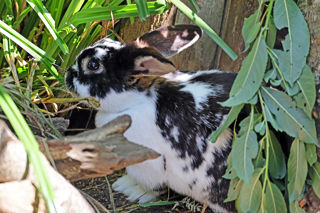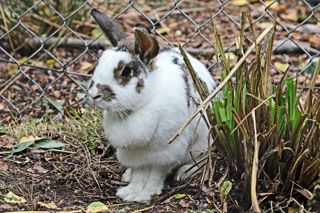
Rabbit
Oryctolagus cuniculus
Rabbits have been domesticated since the beginning of the Middle Ages. There are known to be 305 rabbit breeds, of which many (since the 19th century) are kept as pets.
Since speed and agility are a rabbit’s main defence against predators, rabbits have large hind leg bones. Rabbits are herbivores that feed by grazing on grass and other leafy plants. Their diet contains large amounts of cellulose, which is hard to digest. Rabbits solve this problem by passing two types of faeces; hard droppings and soft, black viscous pellets, known as cecotropes, which they re-ingest.
Main threats
Habitat loss and livestock farming.
Distribution
Native to the Iberian Peninsula (Spain, Portugal and Andorra), western France, and the northern Atlas Mountains in northwest Africa.
Description
Lifespan: up to 10 years
Weight: 1.1-2.5kg
Length: 34-50cm

Family facts
As a result of the position of the eyes in its skull, the rabbit has a field of vision that encompasses nearly 360 degrees, with just a small blind spot at the bridge of the nose.
The European rabbit is well known for digging burrows, called warrens, where it spends most of its time when not feeding. Unlike the related hares, rabbits are altricial, which means the young are born blind and furless, in a fur-lined nest in the warren, and they are totally dependent upon their mothers.


